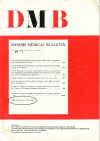多发性骨髓瘤骨重塑改变的生物学方面和药物干预的可能性。
摘要
多发性骨髓瘤是一种致命的B细胞肿瘤,通常导致局灶性骨破坏,在某些情况下更弥漫性骨破坏。骨破坏是骨吸收细胞活性增加的结果——多核破骨细胞通过多次融合出现。在多发性骨髓瘤中,克隆扩张的癌细胞为破骨细胞募集、分化和过度骨吸收提供刺激信号。骨髓瘤细胞的刺激作用被认为是通过产生细胞因子和局部因子或通过调节骨微环境以刺激破骨细胞骨吸收来介导的。然而,我们最近的研究揭示了骨髓瘤细胞对骨破坏的一种新的、更密切的潜在贡献。我们对骨髓瘤患者骨活检的分析显示,破骨细胞内完全整合的恶性核具有转录活性。结果,骨髓瘤患者骨髓活检中约30%的破骨细胞实际上是破骨细胞-骨髓瘤细胞的混合体。由于这种新细胞类型的功能相关性仍然不确定,我的博士研究的目的是1)加强杂交细胞存在的证据,2)阐明杂交细胞和非杂交OCs之间的功能差异,3)将这些发现与多发性骨髓瘤溶骨病的发病机制联系起来。为此,我开发了一种破骨细胞与骨髓瘤细胞融合的培养模型,在(预)已经致力于融合的破骨细胞和选择粘附的骨髓瘤细胞之间。采用绿色荧光标记法检测杂交细胞的骨吸收特性。对比骨片上高荧光和非荧光oc,高荧光破骨细胞主动吸收骨的频率似乎比非荧光破骨细胞增加。这是通过两种独立的方式进行评估的。此外,与非荧光破骨细胞相比,这些荧光破骨细胞似乎吸收更深。需要证实的初步数据表明,骨髓瘤细胞与破骨细胞融合形成的杂交细胞可能导致破骨细胞的重编程,并有助于破骨细胞更积极的骨吸收,这在骨髓瘤患者中很常见。多发性骨髓瘤和相关骨病的另一个方面是对新的和更有效的治疗方案的需求未得到满足。白藜芦醇(反式3,4 ',5-三羟基苯乙烯;RSV)是一种天然化合物,可靶向骨髓瘤骨病的关键参与者:骨吸收破骨细胞、骨形成成骨细胞和骨髓瘤细胞。我们对RSV的体外研究表明,它具有这种理想的三重特性,因此可能是一种治疗多发性骨髓瘤的潜在药物。RSV抑制骨髓瘤细胞的生长和存活,抑制破骨细胞,刺激成骨细胞的形成。然而,由于口服给药后药物浓度高,生物利用度低,且存在严重副作用的风险,因此需要寻找具有相同作用谱但更安全、生物利用度更好的RSV衍生物。作为我博士的另一项任务,我在骨髓瘤细胞、成骨细胞和破骨细胞的培养中筛选结构修饰的RSV类似物。与白藜芦醇相比,一些类似物显示出高达5000倍的抑制破骨细胞分化的效力,并且仍然可以促进成骨细胞成熟,但它们不对抗骨髓瘤细胞。在卵巢切除诱导的骨质疏松模型中,对体外表现最好的候选物的效力进行了体内测试,但无法检测到对骨质流失的影响。在攻读博士学位期间,我还参与了在该系进行的蛋白酶体抑制剂硼替佐米对破骨细胞作用的研究。基于其在多发性骨髓瘤中的有效活性,硼替佐米被EMEA认可为骨髓瘤患者的一线治疗药物。在我们的研究中,我们评估了硼替佐米在模拟骨髓瘤患者脉冲治疗方案的条件下对培养的破骨细胞的影响。脉冲给药硼替佐米显著抑制OC活性,而且,显著但短暂地降低了骨髓瘤患者血清中两种骨吸收标志物的水平。在MM中,恶性浆细胞的克隆扩增导致骨重塑不平衡,因此了解破骨细胞和成骨细胞作用的分子机制是必要的。在博士期间,我参与了间充质干细胞过表达delta样蛋白-1 (Dlk-1)的研究,该蛋白先前被证明可以抑制间充质干细胞(MSC)向成骨细胞的分化。 结果显示,在MSC中,Dlk-1的过表达引起了促炎表型,表明Dlk-1参与了免疫反应。Multiple myeloma is a fatal B cell neoplasm often resulting in focal and in some cases more diffuse destruction of bone. The bone destruction is a result of increased activity of bone resorbing cells--multinucleated osteoclasts emerging through of multiple fusions. In multiple myeloma, clonally expanding cancer cells provide a stimulatory signal for osteoclast recruitment, differentiation and excessive bone resorption. The stimulatory actions of myeloma cells are believed to be mediated via the production of cytokines and local factors or by modulating bone microenvironment in order to stimulate osteoclastic bone resorption. However, our recent study revealed potentially a novel and more intimate contribution of myeloma cells to the bone destruction. Our analysis of the bone biopsies from myeloma patients showed fully integrated malignant nuclei inside osteoclasts, which were transcriptionally active. As a result, about 30% of the osteoclasts in the bone marrow biopsies from myeloma patients were in fact osteoclast-myeloma cell hybrids. As the functional relevance of this novel cell type remained uncertain, the aim of my PhD study became to 1) strengthen the evidence of the existence of hybrid cells, 2) elucidate the functional differences between hybrid cells and non-hybrid OCs and 3) relate these findings to the pathogenesis of osteolytic disease in multiple myeloma. To this end, I developed a culture model of osteoclast-myeloma cell fusion between (pre)osteoclasts already committed to fuse and myeloma cells selected for adherence. The model was applied for testing of the bone resorptive properties of hybrid cells identified by labelling with green fluorescence. When comparing the highly fluorescent and non-fluorescent OCs on bone slices, it seemed that the frequency of highly fluorescent osteoclasts actively resorbing bone was increased as compared with non-fluorescent osteoclasts. This was assessed in two independent ways. Furthermore, these fluorescent osteoclasts appear to resorb deeper compared to non-fluorescent osteoclasts. The preliminary data that need to be confirmed suggest that formation of hybrid cells by fusion of myeloma cells with osteoclasts may result in reprogramming of the osteoclasts and contribute to the more aggressive bone resorption by osteoclasts as it is typically seen in myeloma patients. Another aspect of multiple myeloma and associated bone disease is the unmet need for novel and more efficient therapeutic regiments. Resveratrol (trans-3, 4', 5-trihydroxystilbene; RSV) is a natural compound shown to target the key players of myeloma bone disease: bone resorbing osteoclasts, bone forming osteoblasts and myeloma cells. Our in vitro study on RSV showed that it possessed this ideal triad of properties appearing and thus might be of interest as a potential drug for the treatment of multiple myeloma. RSV suppresses the growth and survival of myeloma cells, inhibits osteoclasts and stimulates the formation of osteoblasts. However, the need for high concentrations combined with low biological availability after oral administration and risk of important side effects stimulated a search for RSV derivates with the same spectrum of actions but safer and with better bioavailability. As the other task of my PhD, I screened structurally modified RSV analogues in cultures of myeloma cells, osteoblasts and osteoclasts. Compared to resveratrol, some analogues showed an up to 5,000-times increased potency to inhibit osteoclast differentiation and could still promote osteoblast maturation but they did not antagonize myeloma cells. The potency of the best-performing candidate in vitro was tested in vivo in an ovariectomy-induced model of osteoporosis, but effect on bone loss could not be detected. During my PhD, I also participated in the studies of the effect of the proteasome inhibitor - bortezomib on osteoclasts conducted at the department. Based on its potent activity in multiple myeloma, bortezomib was accepted as a front-line treatment of myeloma patients by EMEA for the European Union. In our study we assessed the effect of bortezomib on osteoclasts in cultures under the conditions that mimic the pulse-treatment regime used for myeloma patients. The pulse administration of bortezomib significantly inhibited OC activity and, moreover, significantly but transiently reduced levels of two bone resorption markers measured in serum of treated myeloma patients. In MM the clonal expansion of malignant plasma cells results in the unbalanced bone remodelling, therefore it is essential to understand the molecular mechanisms governing the actions of osteoclasts and osteoblasts. During my PhD, I was involved in the investigations of mesenchymal stem cells over-expressing delta like protein - 1(Dlk-1) previously shown to inhibit the differentiation of mesenchymal stem cells (MSC) into osteoblasts. In results, the over-expression of Dlk-1 evoked pro-inflammatory phenotype in MSC suggesting the involvement of Dlk-1 in the immune response.

 求助内容:
求助内容: 应助结果提醒方式:
应助结果提醒方式:


